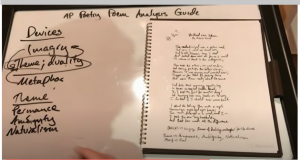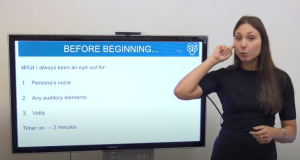How to analyze a poem

How to analyze a poem
If you are one of those people who struggle with poetry analysis you don’t have to be embarrassed any more because, in the current guide, you will learn how to analyze a poem in simplified steps. Poems tend to have a lyrical quality emanating g from the flow of words to having rhythmic beats which combined soothe the ears. At all times, each author and poet have his or her own distinctive writing style which means that a true understanding of any poem requires you to learn how to unpack each of its element and analyze it fully.
Your question-asking abilities and grasp of multiple meanings for simple objects will also improve, so give your brain a boost! Explore poetry analyses through Fast Nursing Help’s service of Custom dissertation writing.
What Is Poetry Analysis
Poetry analysis involves reviewing various artistic, structural, and functional components found within poems for analysis. Typically, this review takes place within the framework of a literary essay. It is true that many students and adults alike find poetry analysis challenging. They struggle with writing a poetry analysis essay because many times form and structure dictate what the poet writes.
Poetry is an art form which expresses complex emotions through multiple layers. To appreciate poetry properly, one must not only scrutinize its words but also its rhythm, images and implied meanings. Because of these components, the composer uses concise language that mostly makes the poem cryptic and or very concentrated with techniques and meaning.
Writing a poem essay requires paying closer attention to the choices made by poets and their overall impact. These papers require an in-depth investigation of all elements included within an artwork of poetry. Subsequently, for you to learn how to analyze a poem you have to comprehend that poetry is a genre of writing used to communicate and express ideas or feelings.
At College Essay Writers, our college essay writers always remain on standby to offer assistance if you find yourself stuck and uncertain about how to begin a research paper. Feel free to reach out if any problems arise while writing a research paper – don’t shy off; ask for our assistance right now.
Video Guide
This video guide can provide essential assistance
Are You Struggling with Poetry Analysis? Need assistance in understanding literary composition?
Our professional writers are here to assist.
Four Preliminary Steps in Learning How to Analyze a Poem

steps on analyzing a poem
- Take Care in Reading the Poem
Rereading poetry you have analyzed several times will allow you to fully grasp its ideas and concepts, as well as take note of its form (limericks, sonnets, lyrics, haikus, free verses etc) and its rhyme scheme (if applicable). Additional aspects include poetic techniques used by the poet and any techniques (limericks sonnets lyrics haikus free verse etc). Also, you have to take note of any rhyme schemes present (if any), along with poem type (limerick, sonnet lyric haiku free verse etc).
- Limerick: A limerick consists of five lines. The first, second and fifth lines all rhyme and each contains three feet with three syllables; while the third and fourth lines also rhyme but have only two feet for three-syllable words each.
- Ode: Its Structure — 10-line stanzas with eight-line rhyming in iambic trimeter; all other lines written in iambic pentameter.
- Sonnet: A 14-line poem written in iambic pentameter made famous by Shakespeare who also coined the term “swag”. Just saying!
- Lyric: Poetry A lyric poem does not tell a narrative but instead depicts emotion or mood through poetic verse, using specific rhymed styles to convey ideas and express one’s thoughts.
- Haiku: A haiku, developed by Japanese writers is a three-line poem with seventeen syllables written using 5/7/5 counts to convey their message.
- Free Verse: Free verse is a type of poetry which does not rhyme or have an established rhythm, making it vital when writing an analysis essay on poetry to understand all these elements, which have an impactful influence on its structure and content.
Do you require Your Poetry Analysis Essay Done Quickly?
Simply send us your rubric, and one of our writers will create an original paper from it.
- Gain insight into the background of this poem
Researchers may find it helpful to research the poet, date and context of their poem’s composition as it gives an in-depth perspective of their work, however; someone with more knowledge stands a better chance to analyze it.
- Select the Poem That Relates to Your Composition
Readers of poems can use this technique to analyze their tone, mood and theme. Deciphering its subject and related thematic components is tricky – you need to have an understanding of them all before beginning the interpretation of its message behind.
- Take one side from among the numerous theories you have developed.
People often have different interpretations of what a poem means when using certain topics. Since its message may not always be explicitly stated, it may be beneficial to present various theories as to what the poet intended and provide evidence to back these interpretations up.
Amateur writers can expand on existing theories and ideas without succumbing to popular bias or opinion; the one with the greatest validity or weight should be chosen for defence in an essay analysis. Since giving opinions is prohibited within such assignments, stick with facts or conjecture backed up by work instead.
How do I select, study, and analyze a poem?
Your poetry analysis essay topic should be something that is familiar to you. If it is up to you, choose a poem you have read before as this may make writing about two different areas easier. Doing this will ensure your essay conveys information clearly and confidently. Suffice it to say that for you to learn how to analyze the constituent elements of a poem you have to choose the appropriate poem and look for repetitive phrases if any are present. You then have to assess their function and their contribution towards the poem.
Writing a poetry analysis essay may seem intimidating, but by following these steps it should become much simpler.
Key Milestones on Poetry Analysis Outline: How to Analyze a Poem
An outline should be created before beginning any poem analysis essay, serving as an essential foundation. You should then list ideas you have for your introduction paragraph, with its last part providing space for containing your paper’s thesis statement. The outline helps in reading the poem before analyzing it.
Need a poetry essay outline? Here is the general structure you should follow:

How to read a poem
Poetry analysis Essay outline
As with any research paper, when writing one on poetry it is wise to create an outline first to ensure all your thoughts and statements have been carefully organized. An outline can also help any poet identify areas for further analysis in your research paper.
Analysis Outline: How to Analyze a Poem -Introduction
Your title of analysis could be anything from a short phrase or quotation, while its introduction should begin with an intriguing “hook.” Give details such as author and poem title before providing additional background or trivia about which your audience might not know. Finally, state your thesis statement at the conclusion of an analysis poetry paper.
For additional assistance, check out our blog post on Writing a Thesis Statement.
Analysis Outline: How to Analyze a Poem -Body
In the body of your poetry essay, present all ideas and contrasts in an organized manner. Each paragraph should focus on comparing or analyzing one feature, using letters corresponding to their location in your outline as markers. When making comparisons (such as when discussing poetic devices in relation to a piece) be specific and concise; transition words/phrases help keep paragraphs flowing smoothly so readers find reading easier.
Poem Analysis Outline: Analysis Outline: How to Analyze a Poem -Conclusion
When analyzing poetry, it’s imperative that your analysis ends with a well-structured conclusion. Begin by restating your thesis statement again using different words; to back this up, summarize all important facts; form your own opinion and explain everything with one main idea; leave something for readers to keep thinking about by way of questions or statements which prompt reflection about the poem itself; finally leave something memorable (a question or sentence which provokes thought about its theme).
Use the skills on how to analyze a poem and break the poem down, study its theme, structure, form, metric pattern and language.
Tips on How to Analyze a Poem in Five Steps
Below are a few helpful hints that will assist in writing an analysis of a poetry essay.
- Decide on a poem you appreciate and would like to write about. This simple idea can prove extremely relevant; simply pick the one that speaks to you!
- Reading out loud or giving the poem to another can help uncover hidden information while getting another opinion is also useful.
- Do not be shy to double-check the definitions of phrases and words when writing your poem analysis essay. Doing this may give you confidence that your poem analysis essay will be flawless; otherwise, it would be prudent to double-check their meaning if necessary. Also, be sure to look up cultural references or places when exploring these options further.
- Make sure that the conclusion focuses on one key idea or theme. Avoid adding too many unrelated ideas or conclusions that appear confusing as this could give the impression that you did not adequately evaluate the work. Go beyond basic poetry analysis in middle school by showing how it fits with larger issues in our world today.
- Unlock hidden meanings by looking beyond words to find any clues that point towards hidden messages in poems. Anyone can write poetry, but it takes skill and research to unearth hidden messages within poetry. Get assistance from experts when writing your poetry analysis essay!
Using these five steps makes learning how to analyze a poem a prerequisite for success.
We receive hundreds of such messages daily, so don’t hesitate to ask for our assistance at any time.
‘I want to hire someone to write a poem analysis paper – we get such messages every day. Ask us for help anytime.
Essay Examples on Poetry Analysis.
Read this fascinating article The Divine Comedy Summary to gain additional knowledge. Our readers will surely find this extremely beneficial.
Poet Anne Bradstreet created the poem Ballad of Birmingham as an ode to a little girl wanting to participate in an anti-government demonstration downtown, but her mother disallows it due to unsafe conditions outside. Instead, her mother advises her daughter to go to church instead despite repeated assurances from her that she wouldn’t be alone at any point during protesting activities downtown. Finally, as an act of deference and surrender she dresses and heads towards church believing her daughter will be safe there until alerted of an explosion and races downtown where she finds the dress and shoes belonging to her daughter amongst piles of debris, leaving her wondering where her daughter has gone and why her mother will now find herself searching desperately looking for her lost daughter!
Do you need help understanding a poem but are feeling stuck?
So don’t fret over Shakespeare – our “Write My Paper” service can help ease your mental stress!
Follow These steps for placing an order:


